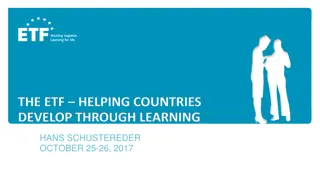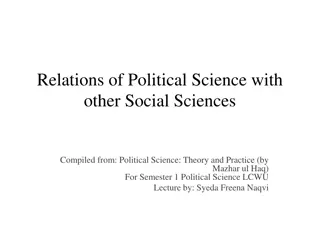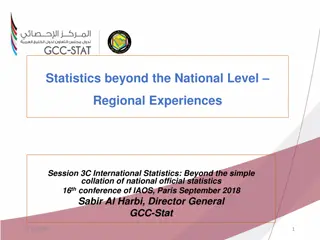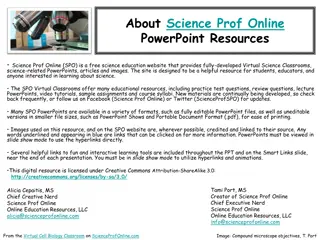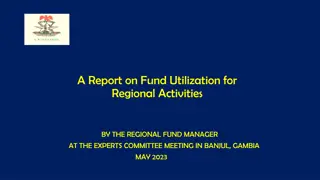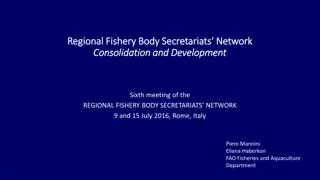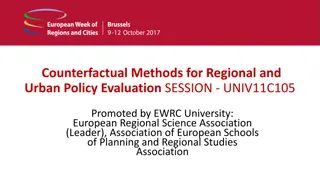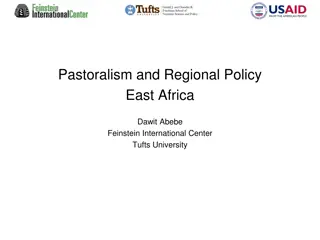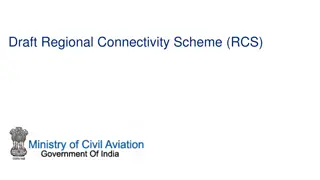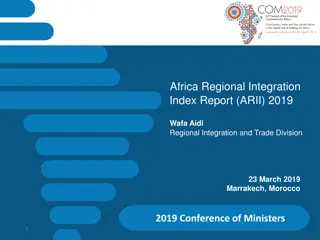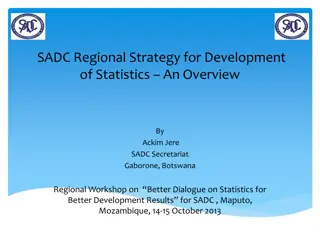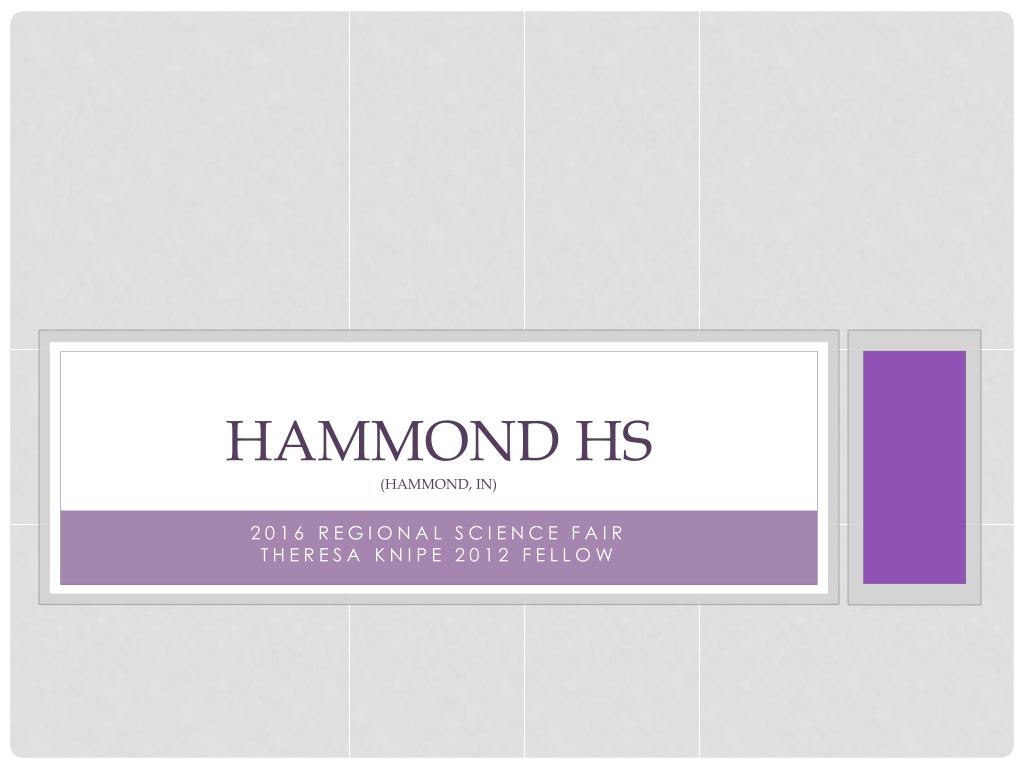
Regional Science Fair Projects Showcase Student Innovations
Explore fascinating science fair projects by students from Hammond HS, including studies on the effects of sugars on fruit flies, the impact of temperature on electrolytes in sports drinks, and an analysis of minority representation in animated cartoons. Discover innovative research and findings that contribute to scientific knowledge in various fields.
Download Presentation

Please find below an Image/Link to download the presentation.
The content on the website is provided AS IS for your information and personal use only. It may not be sold, licensed, or shared on other websites without obtaining consent from the author. Download presentation by click this link. If you encounter any issues during the download, it is possible that the publisher has removed the file from their server.
E N D
Presentation Transcript
HAMMOND HS (HAMMOND, IN) 2 0 1 6 R E G I O N A L S C I E N C E F A I R T H E R E S A K N I P E 2 0 1 2 F E L L O W
2016 REGIONAL SCIENCE FAIR The 60thAnnual Calumet Regional Science Fair was held at Indiana University Northwest on March 12, 2016. Hammond HS proudly submitted 7 projects to the competition and had all qualify for the State competition. The Indiana State Science Fair competition was held on April 2, 2016 in Indianapolis, IN.
HAMMOND HS STATE QUALIFIERS THANK YOU SSP FOR SPONSORING OUR PROJECTS.
SHANIA MITCHELL Sugar Rush: The Effect of Sugars on Fruit Flies Common fruit flies have been found around fruits in most homes. Most of the time fruit fly traps are not easy to deal with, and figuring out how it works is never easy. For this experiment, Fruit flies and different types of sugars will be used to determine which of them will kill them or starve them. The three main types of sugars that will be used in this experiment is sugar 2, which is an artificial sweetener used as a calorie free sugar substitute, Sugar 1, a substitute sugar that doesn't add calories and derived from a plant, and sugar 3, common table sugar. These sugars are being researched on what they are made of, chemical structures , and what type of sugar it is. From observing the flies in the jars with the sugars for five days, it was obvious that the fruit flies was killed by sugar 1, the chunky sugar, and when it was mixed with the sugar 2, the powdery sugar flies were not only eating the sugar but also able to create larvae and pupae. From the results, Sugar 1 will help getting rid of fruit flies.
CARLOS ZENDEJAS Temperature and Electrolytes The topic of this experiment is electrolytes, specifically in sports drinks, and how the temperature of the drinks affects the electrolytes conductivity. The main objective of this experiment is to see what temperatures make the electrolytes in sports drinks the most effective. With the use of a Lab Quest, a conductivity meter, a temperature sensor, and some temperature factors, I gathered information and data on the effect temperature has on the electrolytes in sports drinks. The data gathered helps to show whether cold, warm, or hot temperatures increase or decrease the conductivity of the sports drinks, which also shows if the drinks are more or less effective at those temperatures.
MARIAH BARREN Diversity Dispersity This project was conducted in order to make a detailed analysis based on the behaviors and circumstances of minorities depending on the time period. It is to test the very reason minorities are seen this way and the possible exceptions that allow them to be perceived as favorable in society presently, and society of the previous time. The strategy in performing this project was rather simple, which was to become familiar with a vast number of animated cartoons from the previous century and the century now, and be able to distinguish the qualities between them to come to a conjoined conclusion. It is found that minorities were only acceptable characters at the expense of their reputation, or if they are modified to the point of acceptance. Meaning, a minority of any ethnicity from the 20th century was only accepted if it benefited the latter, and minorities of the 21st century are only accepted through modification and strict observance on what is being premiered on television. Conclusively, the hypothesis of this project is correct.
JONATHAN MARQUEZ H2O2 Corrosion This will be an experiment to find the anticorrosive abilities of four household oils that can be found to be useful in multiple ways. The experiment involves a rusting solution that is easy to formulate. This catalyst is the most harsh and safe for any form of iron, for this reason this will be the constant source of rusting. Steel nails will be corroded with dried coats of each oil. The decision of which oil that will be most anticorrosive is chosen through the least amount of change in mass for one type of oil.
LEONARDO RAMOS IV Glass Under Pressure I am performing this experiment to try and prove that clear gloss is effective in increasing the amount of force needed to break glass. I will place five layers of clear gloss on multiple samples and apply a constant force to see if any of the gloss is effective. The results are difficult to understand since each sample, whether it had the same type of clear gloss or not, varied greatly from the last, in the amount of force that could be withstanded.
LUIS ROMERO CO2 in Radish Seeds I was looking on line after hearing about the CO2 levels going up in the last past years. I Wondered if CO2 was good for plants. Then later looked it up and found out that plant need CO2 to live and make their own food. So I wonder if too much CO2 is bad for plant and if it affects plant growth. I decide to test it, I got the same size jars and added vinegar and baking soda with some radishes seeds. Each jar had different amount of CO2 levels. I also had another jar with just seeds and not vinegar to see if the vinegar had something to do with the plant growth.
PARIS GOODLOW Muffins are one of life's many pleasures They come in all types of varieties. But one major constant throughout those many varieties is baking powder, but what if we exchange baking powder for baking soda. What will Change and what will stay the same? This project will examine just what the differences are between normal muffins and baking soda muffins. I first baked my muffins and before I collected the data I allowed them to cool down. My hypothesis was that there would not be a dramatic change between the baking soda and baking powder muffins. The experimental results disproved my hypothesis by showing that the baking soda muffins tended to be both lighter and smaller than normal baking powder muffins. Now I know the importance in the usage of baking powder. Even though you will still be able to use baking soda the muffins just won t taste the same.
AWARDS Shania Mitchell: Air Force Award, Purdue Award, US Metric Assoc., IUN Sr. Division (3rdplace), Gold Medalist, $25.00 scholarship, NOBCChE Excellence in STEM Award and State Finalist Carlos Zendejas: US Metric Assoc, Yale Science & Engineering Award, Gyte Scholarship ($10.00), Gold Medalist, $25.00 scholarship, and State Finalist Leo Ramos IV: Air Force Award, Assoc. Science & Materials Award, IUN Sr. Division (5thplace), Bronze Medalist, $25.00 scholarship, and State Finalist Paris Goodlow: Bronze Medalist, $25.00 scholarship, and State Finalist Mariah Barren: American Psychological Award, Bronze Medalist, $25.00 scholarship, and State Finalist Luis Romero: Nasa Earth Prize, Silver Medalist, $25.00 scholarship, and State Finalist Jonathan Marquez: Air Force Award, Society of Tribologists and Lubrication Engrs ($100.00), IUN Sr. Division (4thplace), $25.00 scholarship, and State Finalist



